




The wind energy sector is experiencing a paradigm shift in manufacturing techniques, particularly in the production of smaller wind blades (5-7 meters). As the industry seeks more efficient, sustainable, and cost-effective production methods, Automated Fiber Placement (AFP) technology is emerging as a game-changer for small to medium production runs. Let's explore how this advanced manufacturing approach is addressing the unique challenges of smaller wind blade production.
The foundation of superior wind blade performance lies in precise fiber orientation and placement. AFP technology, particularly when paired with advanced systems like the AFP-XS single tow system and AddPath offline programming software, delivers unprecedented control over fiber placement—achieving accuracy within half a degree. This precision is crucial for the complex twist and taper profiles that define aerodynamic efficiency in 5-7 meter blades.

Unlike traditional manufacturing methods that rely on manual placement of square material rolls, AFP systems excel at navigating the intricate geometries of wind turbine blades. The technology's compaction roller ensures optimal adhesion even around sharp corners, systematically eliminating air bubbles while maintaining exact fiber orientation. This transforms what was once a variable, labor-intensive process into a highly controlled automated operation that consistently delivers aerospace-grade quality.
The real breakthrough comes in the technology's versatility. Modern AFP systems aren't limited to simple, open 3D shapes—they can handle complex winding patterns on curved surfaces, making them ideal for the unique aerodynamic profiles required in wind energy applications. This capability means manufacturers can achieve optimal structural efficiency while minimizing material usage, a critical factor in small blade economics.

The economic argument for AFP technology in small wind blade production (100-1,000 units annually) is compelling. Traditional manual layup processes achieve placement rates of approximately 2 kilograms per hour per worker, while automated AFP systems can reach 500-1,000 kilograms per hour. Even when scaled for smaller 5-7 meter blades, the productivity gains are transformative.

Traditional manufacturing requires a complex chain of discrete operations: ply cutting, kit preparation, manual placement, and separate inspection processes. Each step requires dedicated equipment, operators, and floor space. AFP technology consolidates these into a single streamlined operation. Pre-slit tapes eliminate the need for ply cutting equipment entirely, while the programmed placement removes the requirement for kit preparation and storage.
Consider the labor equation: traditional methods require ply cutter operators, lamination technicians, and quality inspectors working in sequence. AFP systems need only a single engineer to program paths, run simulations, and optimize the process. This engineer can adjust parameters in real-time—using thicker materials for faster completion or optimizing fiber orientation for weight reduction—making decisions based on specific project requirements rather than manufacturing limitations.

Material waste in traditional wind blade manufacturing is staggering, with 20-30% of material typically falling away during manual layup. This waste is compounded by the resin infusion process, which adds weight without structural benefit and creates additional environmental disposal challenges. AFP technology virtually eliminates this waste through precise, programmed placement of pre-slit tapes.
The hybrid manufacturing approach represents an intelligent evolution in production strategy. Rather than viewing AFP as an all-or-nothing solution, forward-thinking manufacturers are using it strategically. Manual labor handles mass coverage areas cost-effectively, while AFP technology targets critical reinforcement zones: leading edges, blade tips, and high-stress regions requiring unidirectional tape placement.

This targeted approach delivers multiple benefits: optimized blade weight reducing rotational inertia, improved low-wind performance, and reduced brake system requirements. Each improvement cascades through the entire turbine system, enhancing overall efficiency. By placing reinforcement only where needed, manufacturers avoid the traditional approach of over-building entire structures to strengthen specific sections.
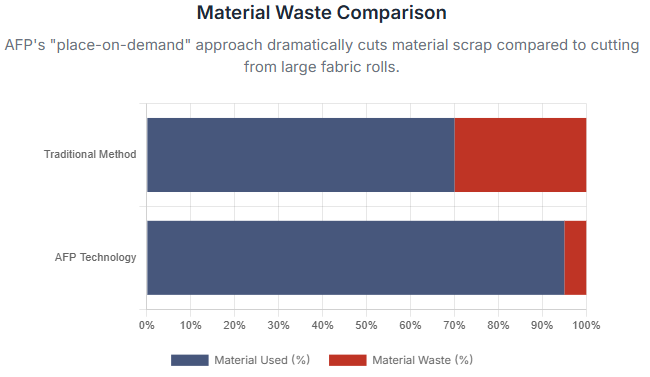
The integration of thermoplastic composites with AFP technology represents a fundamental shift in both manufacturing efficiency and environmental responsibility. Unlike thermoset resins requiring hours-long curing cycles in massive autoclaves, thermoplastic materials achieve full consolidation during the placement process itself.
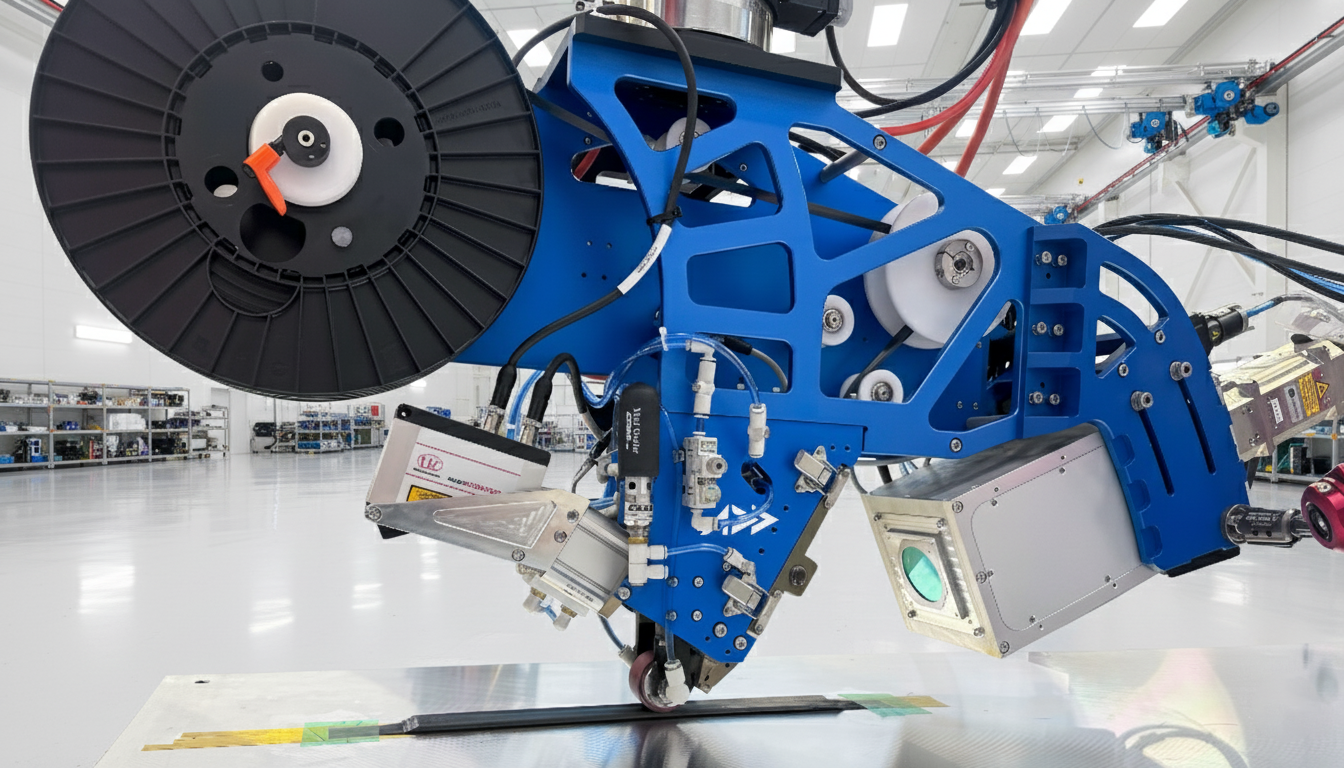
The processing advantages are transformative. In-situ consolidation eliminates entire categories of manufacturing infrastructure—no autoclaves, no ovens, no post-curing requirements. The AFP system's heating element (laser or flash lamp) melts the thermoplastic at the nip point, with cooling providing immediate consolidation. This single-step process dramatically reduces facility footprint, operational overhead, and energy consumption.
For the growing distributed energy market—industrial facilities, remote installations, and small commercial applications—thermoplastic recyclability is particularly valuable. These installations typically have 10-15 year replacement cycles, making end-of-life recyclability crucial for meeting sustainability commitments. Thermoplastic blades can be recycled into new products, supporting circular economy principles while reducing landfill burden.

Quality control represents one of the most persistent challenges in traditional wind blade manufacturing. Manual resin infusion introduces inherent variability—inconsistent resin distribution, trapped air, and human placement errors—leading to high defect rates. When defects occur, entire blade sections often require rework, creating cascading delays and cost overruns.
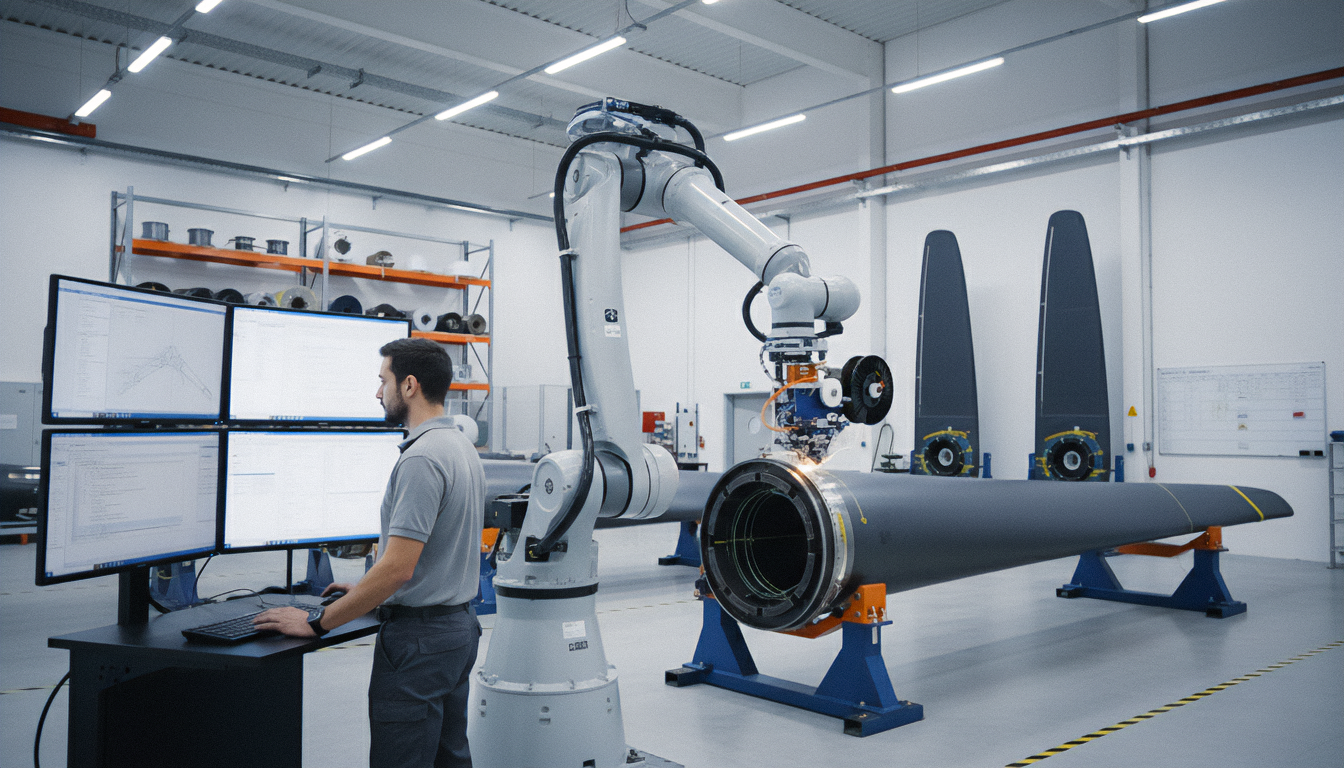
AFP technology with integrated laser line scanner profilometry fundamentally changes this paradigm. Real-time inspection during placement identifies and enables immediate correction of potential issues. This integration is critical: inspection-related issues typically account for 60% of manufacturing downtime in composite production. By moving inspection inline with production, AFP systems eliminate the traditional inspect-rework-reinspect cycle.
The consistency of automated placement, combined with precise temperature and pressure control, dramatically reduces defect rates. When every tape is placed with exact orientation, optimal temperature, and consistent pressure, the variability that plagues manual processes simply disappears. This repeatability doesn't just reduce defects—it enables statistical process control and continuous improvement methodologies that are impossible with manual production.
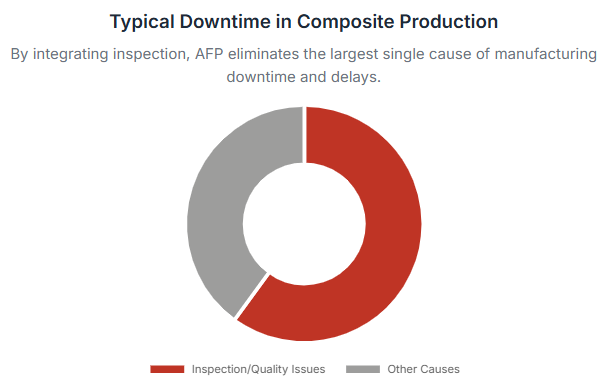

The future of small wind blade manufacturing is here. Addcomposites' AFP-XS system with AddPath software delivers the precision, efficiency, and sustainability your production demands. Our solutions have helped manufacturers worldwide reduce costs by up to 40% while eliminating material waste and achieving unprecedented quality standards.
Ready to revolutionize your wind blade production? Our engineering team is standing by to provide a customized ROI analysis for your specific production volumes. Whether you're producing 100 or 1,000 units annually, we'll show you exactly how AFP technology can transform your operations.
Take action today: Visit our website to download case studies, schedule a consultation with our AFP specialists, or request a live demonstration of the AFP-XS system in action. Don't let outdated manufacturing methods limit your growth—join the AFP revolution and lead your market.
